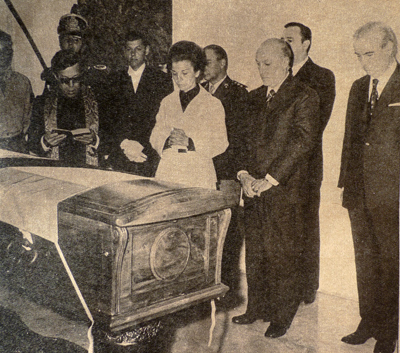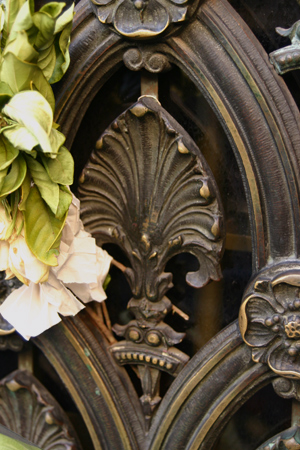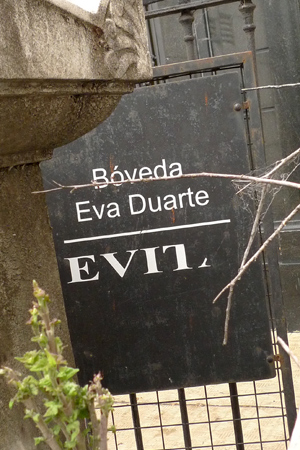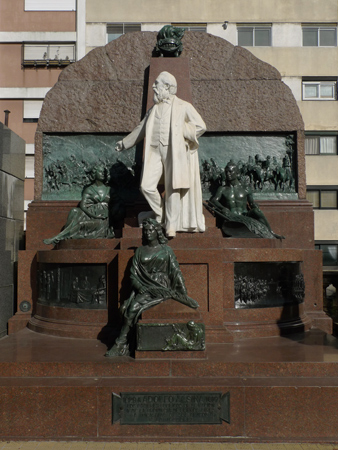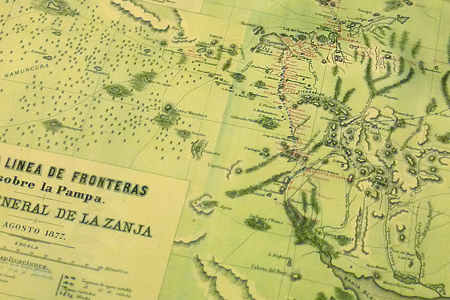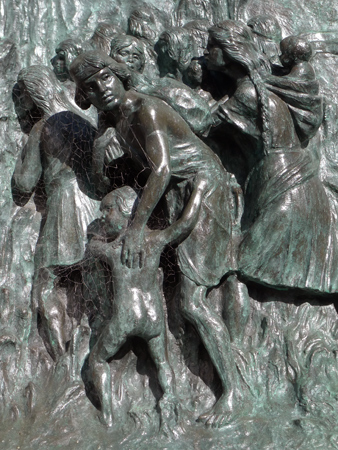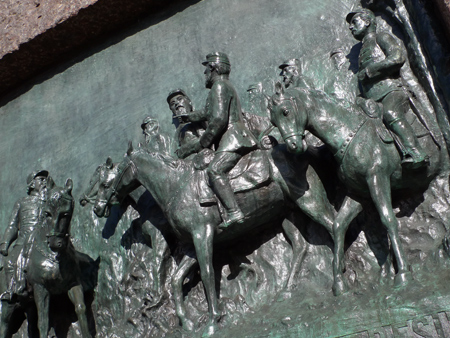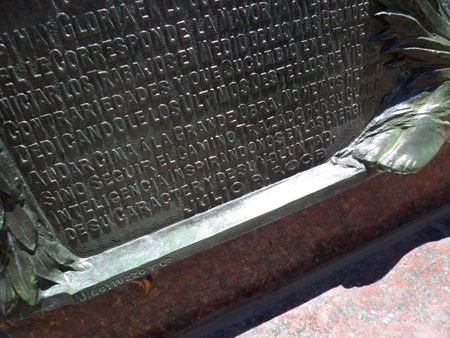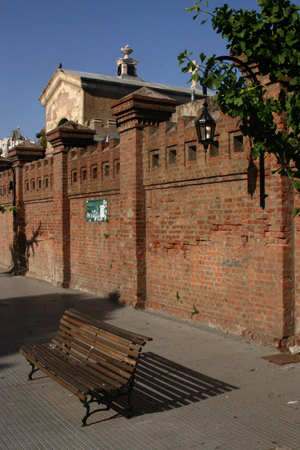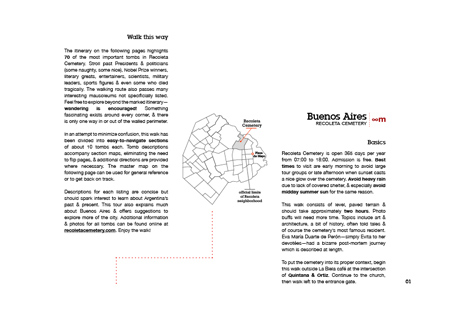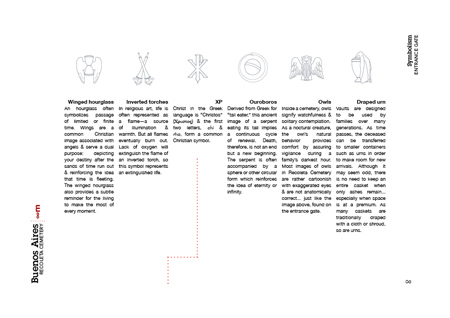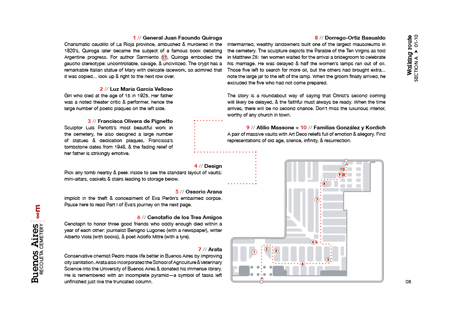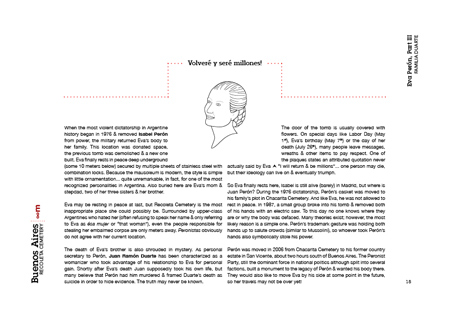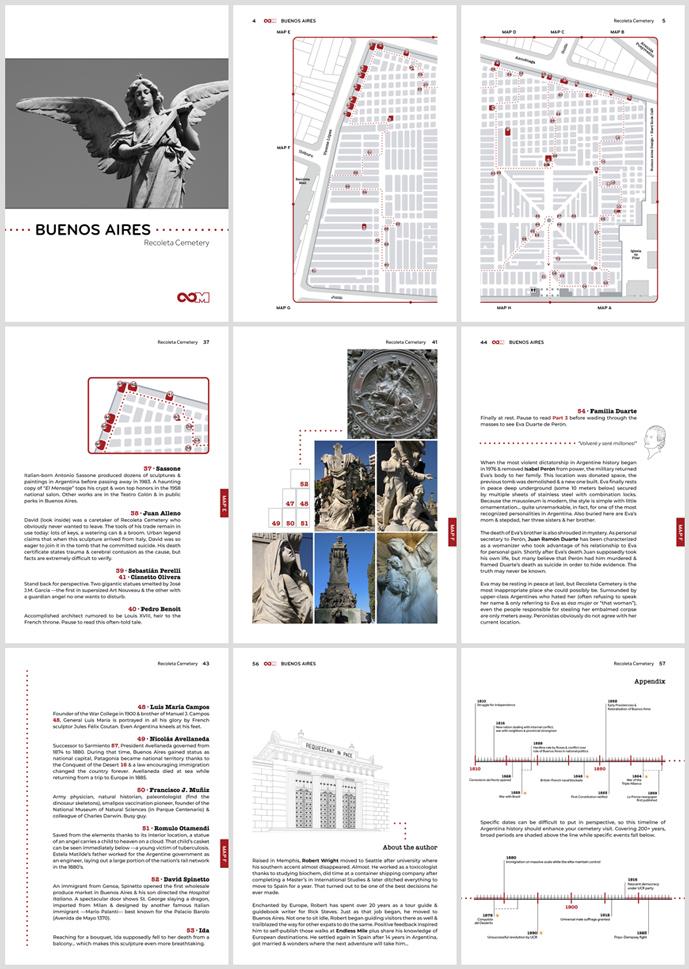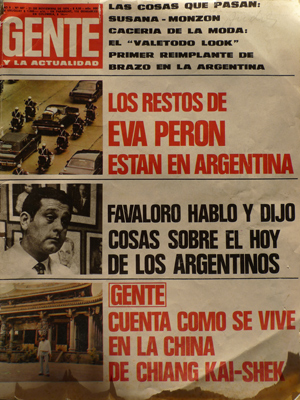
A wonderful online source, Mágicas Ruinas takes popular magazines from Argentina during the 20th century & reposts original photos & reports… a great documentation source. After the Montoneros held the corpse of de facto President Pedro Aramburu as ransom for the return of Eva Perón embalmed body, she finally returned to Argentina on November 17, 1974. The following article appeared in Gente.
Update (28 Jul 2010): Marcelo obtained a copy of the 21 Nov 1974 issue of Gente, so we replaced the scans from Mágicas Ruinas with our own. Text has also been added & translated which did not appear online.
———————————————
Saturday, the 16th, 16:00. The Aerolíneas Argentinas Boeing 707 especially destined for the final transfer to Argentina of the mortal remains of María Eva Duarte de Perón positioning on the runway of the international airport in Barajas, Madrid, ready to begin the historic return flight. The funeral procession was sent off by Spanish Foreign Minister Pedro Cortina Mauri. Vigilant reporters waited for hours:
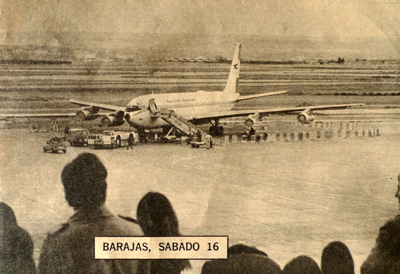
Sunday, the 17th, 06:00. The specially-fitted Aerolíneas Argentinas Boeing 707 has arrived at the Morón air base. An Argentine Air Force Fokker TC-76 waited there, whose mission was to transfer the casket with the remains of Eva Perón to the metropolitan airport (Aeroparque). Heavy security had been placed at both military bases. After 19 years, the remains of Eva Perón returned to the country:

Sunday, the 17th, 10:00. After the Air Force plane landed at Aeroparque, the casket is lowered & place in a hearse which would immediately take it to the official stage, where the President & other high authorities waited. Meanwhile along the coast gathered in silence to witness the procession exit to Olivos:
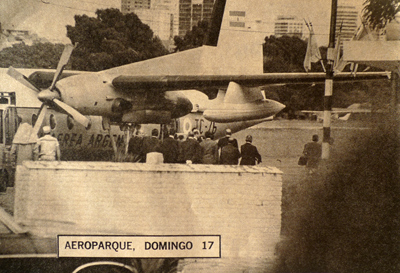
Aeroparque, military zone, 10:05. From left to right, Ivanissevich, Rocamora, Savino, Campano, Martinez, López Rega, Blanca Duarte & Herminda Duarte (sisters of Eva Perón) & María Estela Martinez:
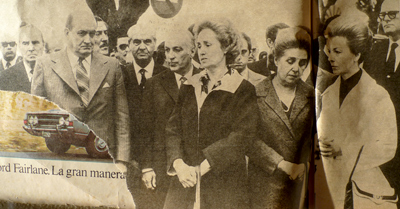
Funeral prayer. Aeroparque, 10:10. The chaplain of the General San Martín Horse Guard regiment, reverend father Héctor Ponzo, prays a final blessing for the soul of Eva Perón. Impressive general silence:
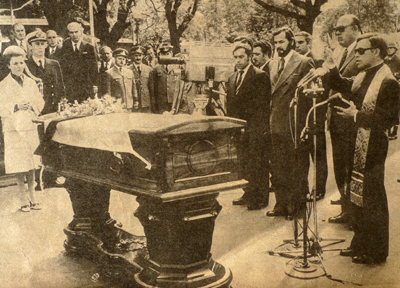
Aeroparque, Sunday, the 17th, 10:15. After the funeral prayer, the heavily guarded coffin is slowly taken by the hearse out of the military zone area of Aeroparque. Soon after, cars began the journey toward the Presidential residence in Olivos, while people threw flowers on the street & cried out along the entire route: Thank you, Isabel:

The procession, Avenida Libertador & General Paz. Motorcycle Federal Police, dressed in formal uniform, escort the procession, drawing a symmetric & moving scene. The car with the President goes immediately behind the hearse:
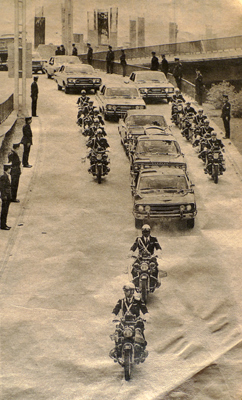
Flowers, silence. Along the entire way people threw flowers as the funeral procession passed in Vicente López. The only things left are the empty street, stains of color on the cement, a few police agents & people with signs. The remains of Eva Perón are already in Olivos (the presidential residence):
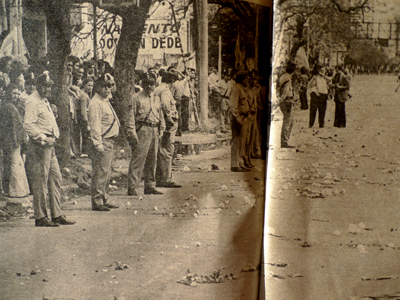
Waiting. Intersection of Villate & Libertador. The procession is about to enter the residence in Olivos. People who have waited hours express emotion as the coffin of Eva Perón passes. This took 19 years to happen. There are choruses, flags & mourning:
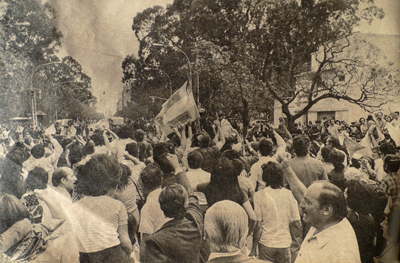
Olivos, Sunday, the 17th, 10:38. The remains of Eva Perón arrive at the Presidencial residence in Olivos. The unloading of the coffin is witnesses by María Estela Martinez de Perón, José López Rega & the Argentine embassador in Spain, José Campano Martinez. At that time, the men & women who had come to receive the body of Eva Perón returned to their homes:
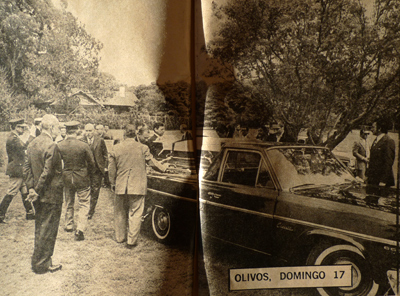
To the crypt. Presidencial residence in Olivos. At 10:40 the coffin with the remains of Eva Perón is taken to the crypt which holds the body of Juan Domingo Perón. A dramatic chapter in Argentine history comes to an end:
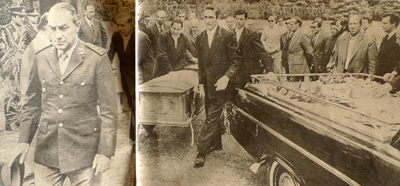
Olivos, Sunday, the 17th, 10:45. Historical moment. Eva Perón’s casket enters the crypt where Juan Domingo Perón rests in peace. It was placed on a pedestal in front of the altar to Our Lady of Luján. Within two weeks, after some site improvements, the coffin will be placed alongside that of Perón, where it will remain until the construction of the National Altar:
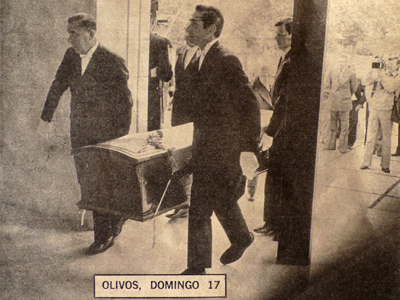
In the crypt. The casket with the remains of Eva Perón now rests in front of the altar of Our Lady of Luján, in the crypt of the Presidential residence in Olivos. Héctor Ponzo, the chaplain of the Horse Guard regiment, prays again for the soul of the deceased. María Estela Martinez de Perón, José López Rega & José Campano are present. The coffin has been covered by an Argentine flag crossed with a black stripe:
